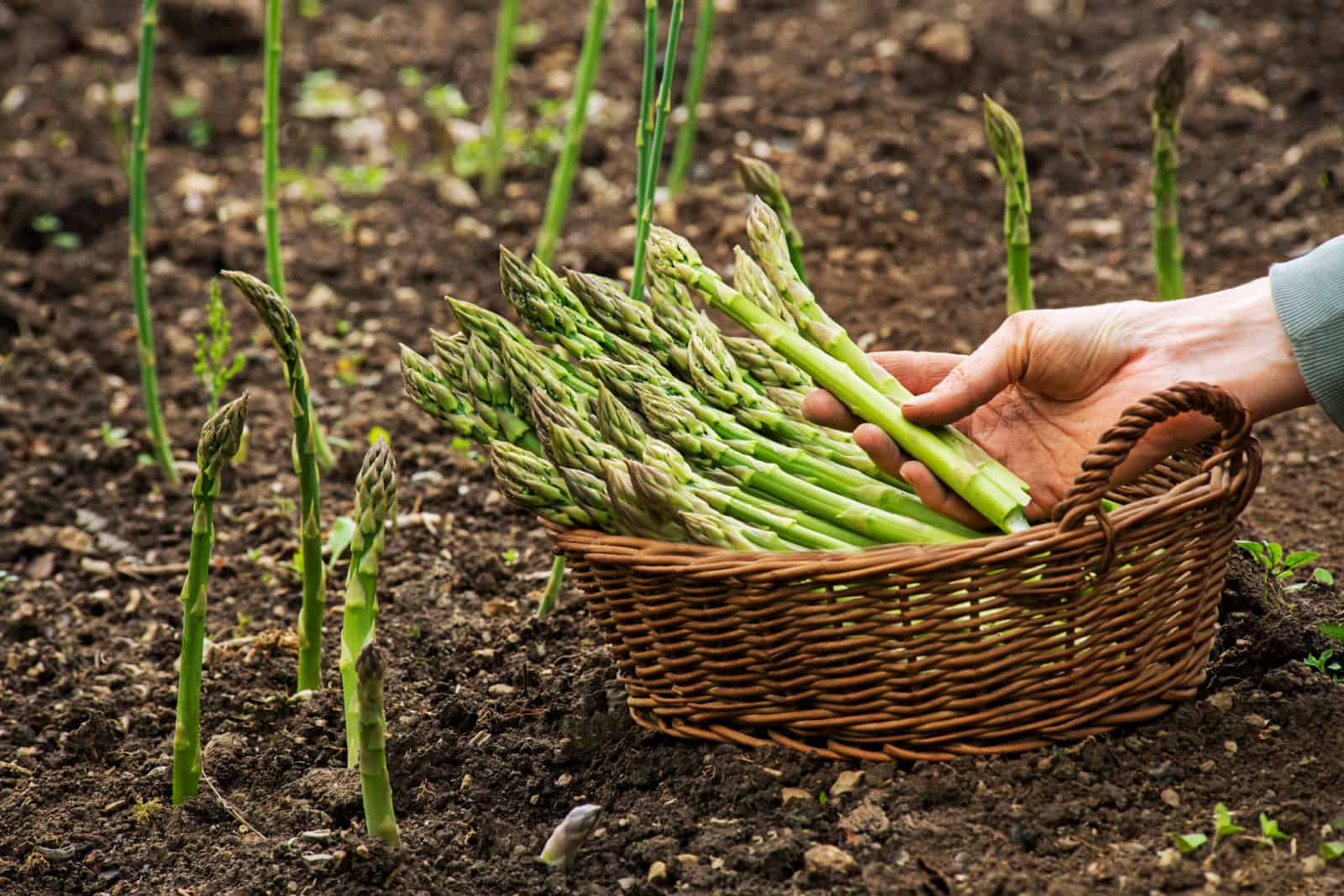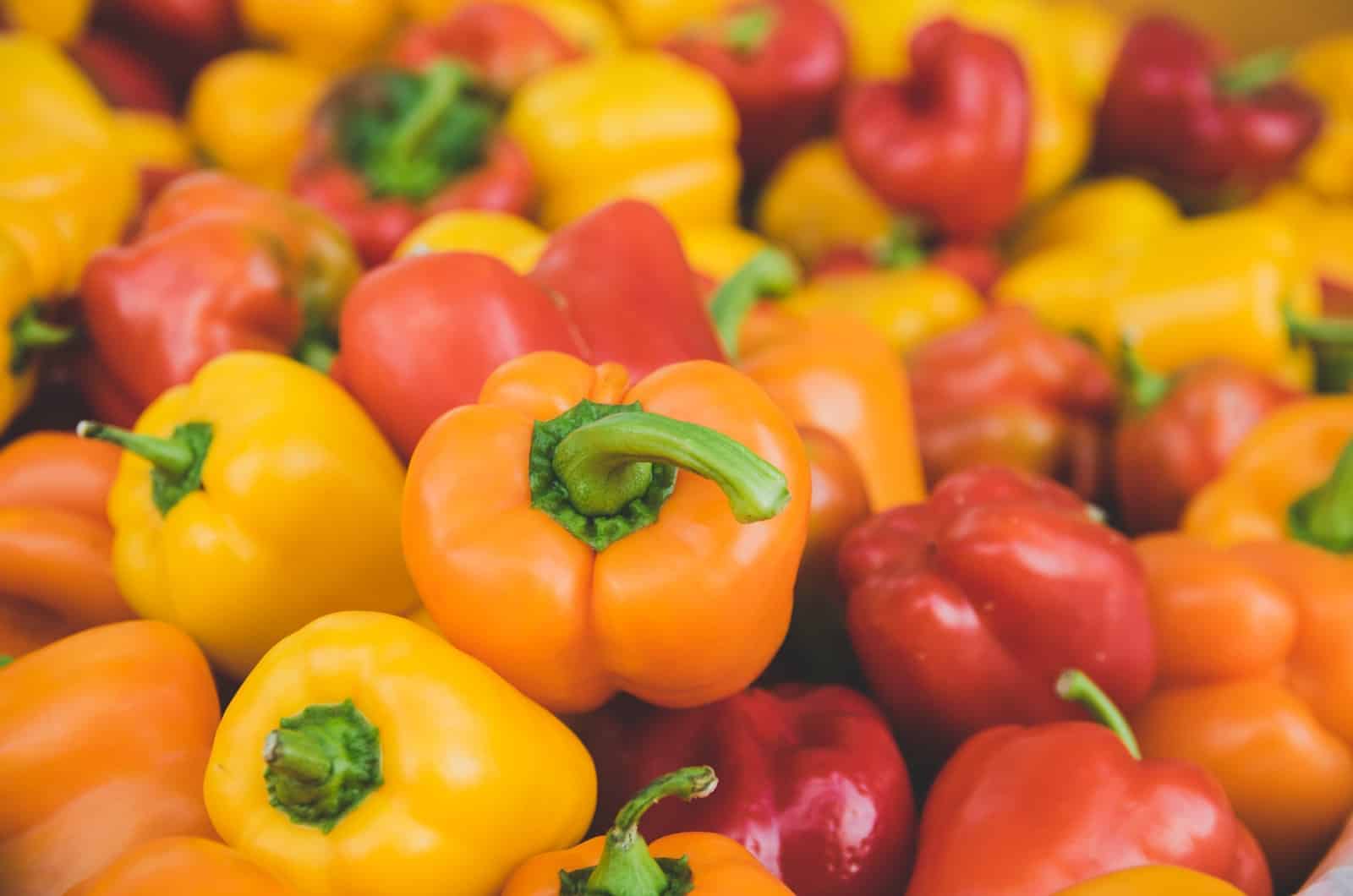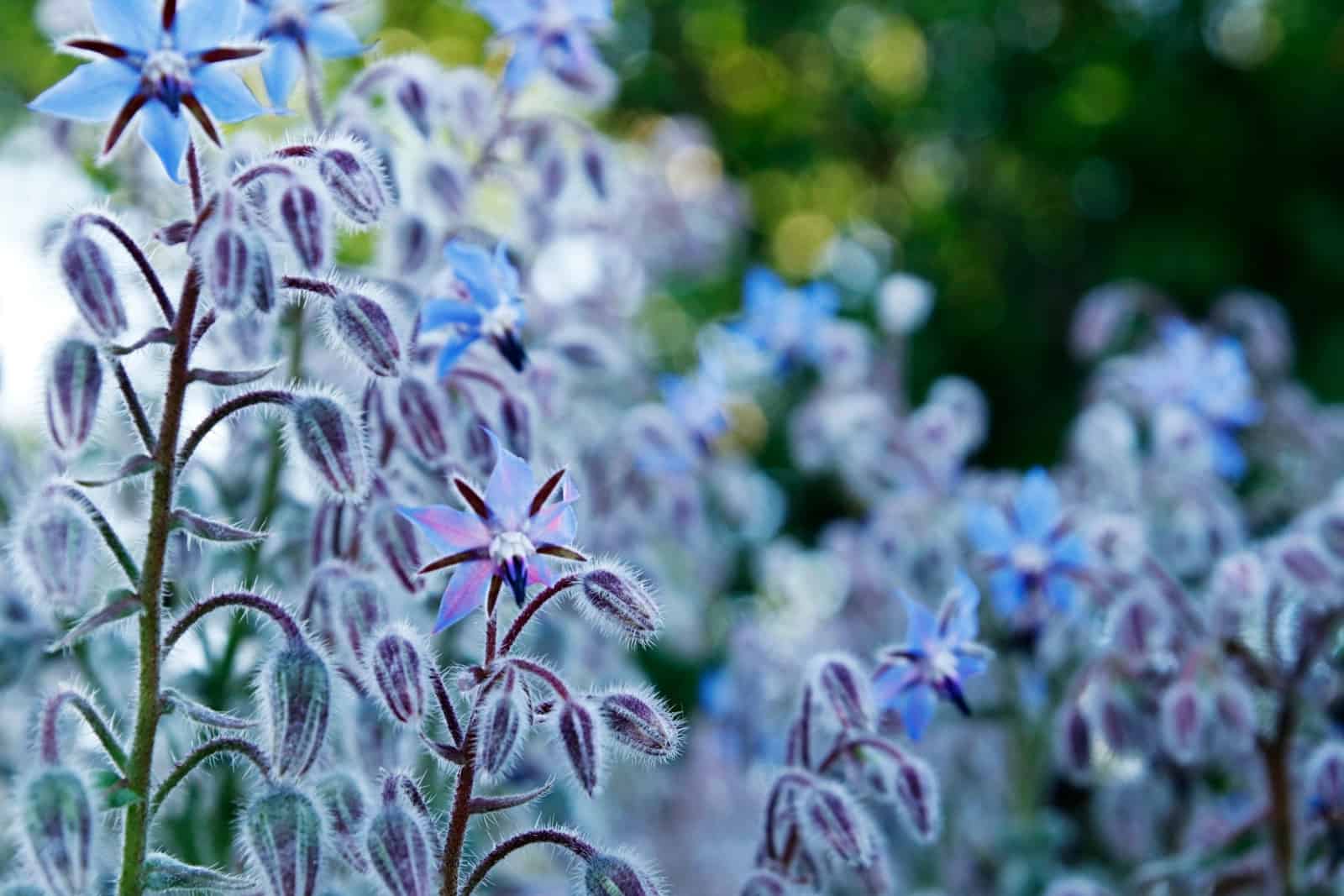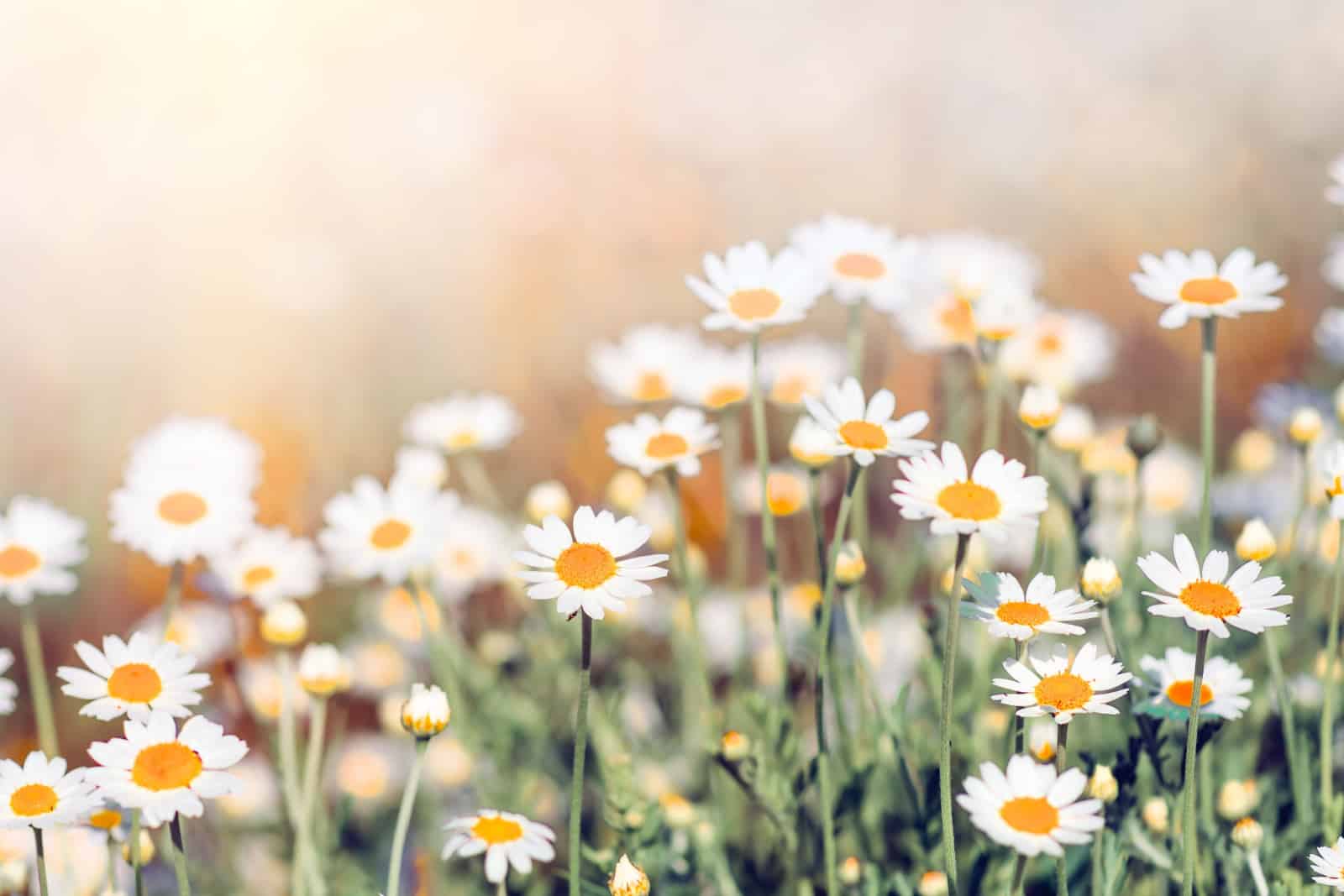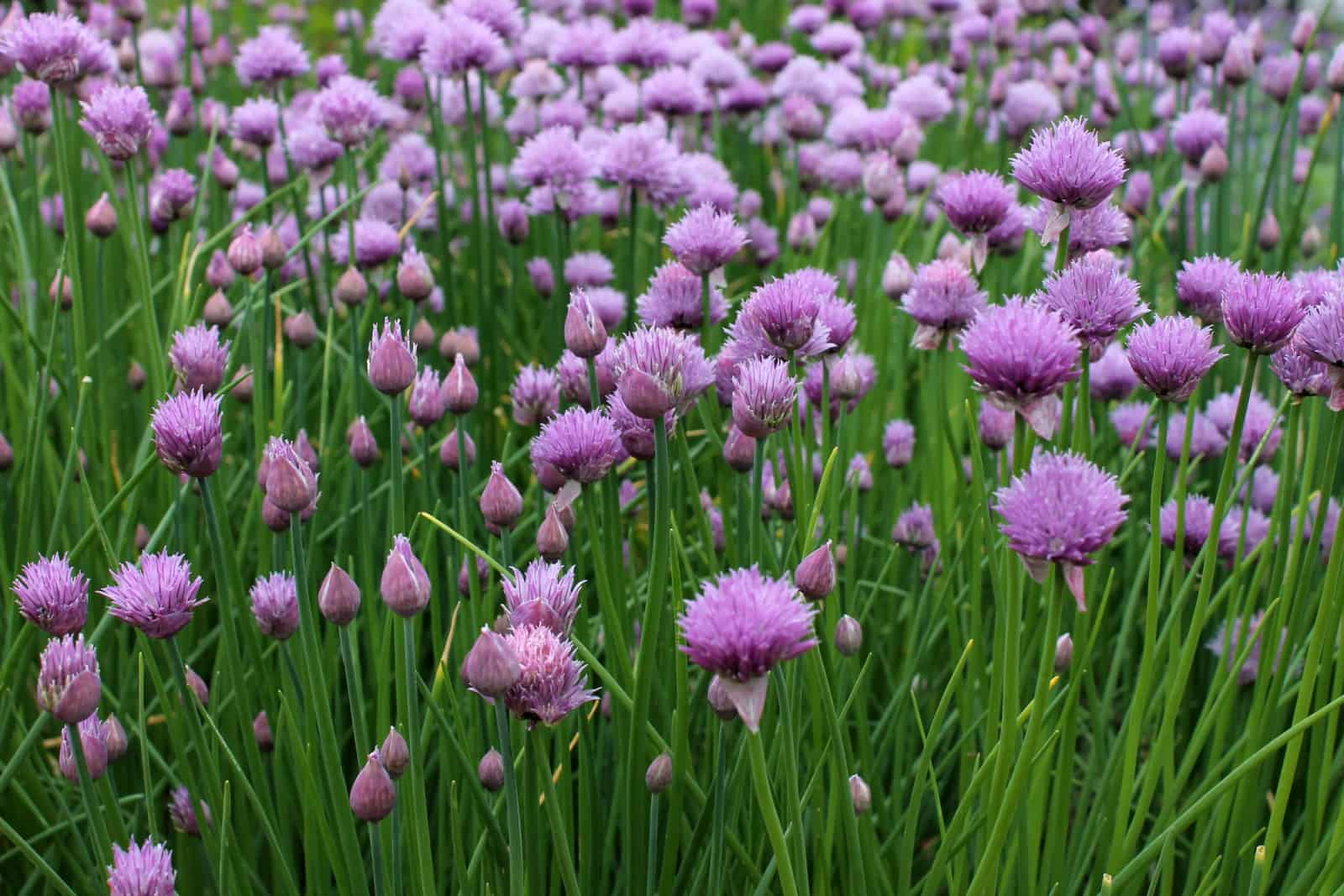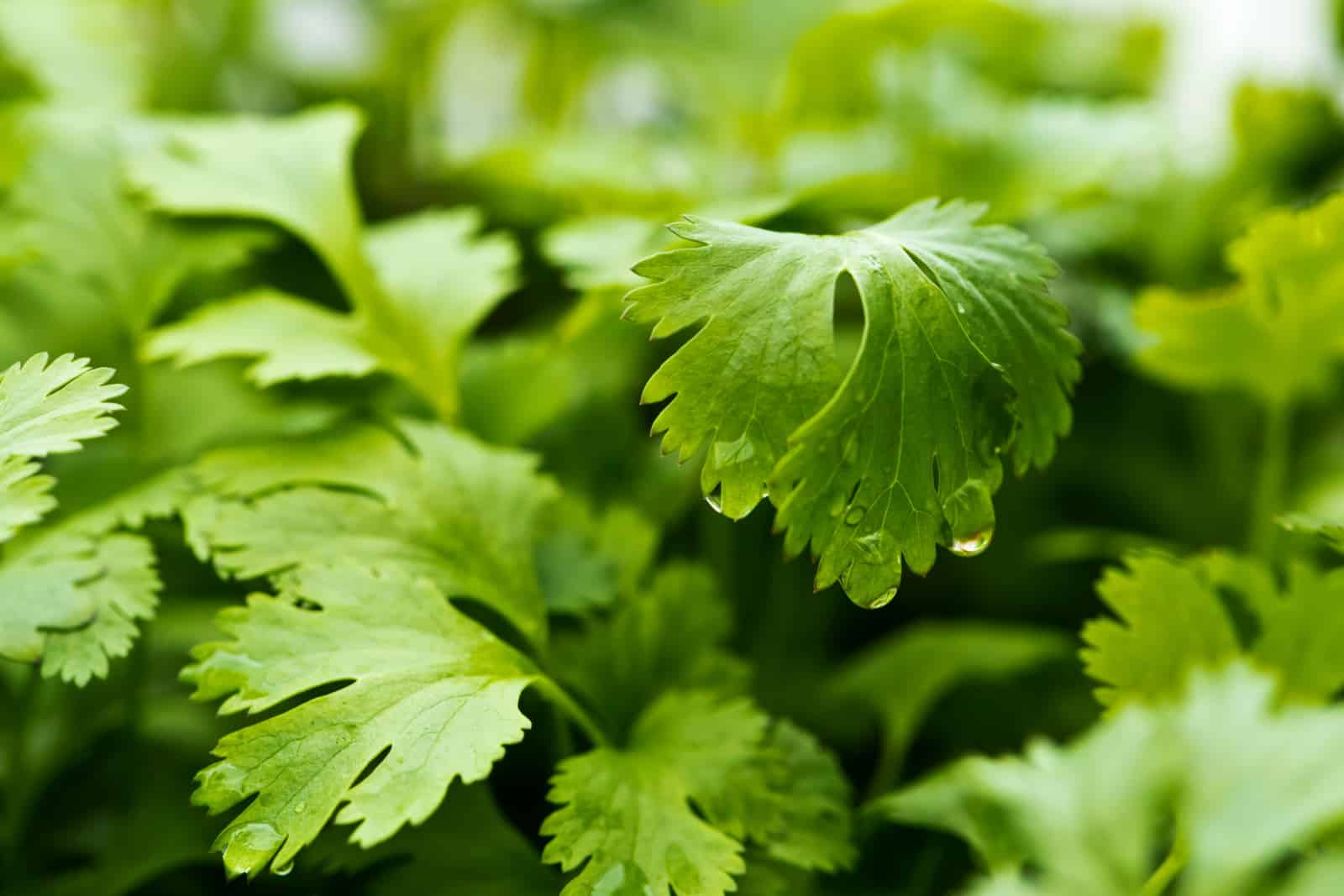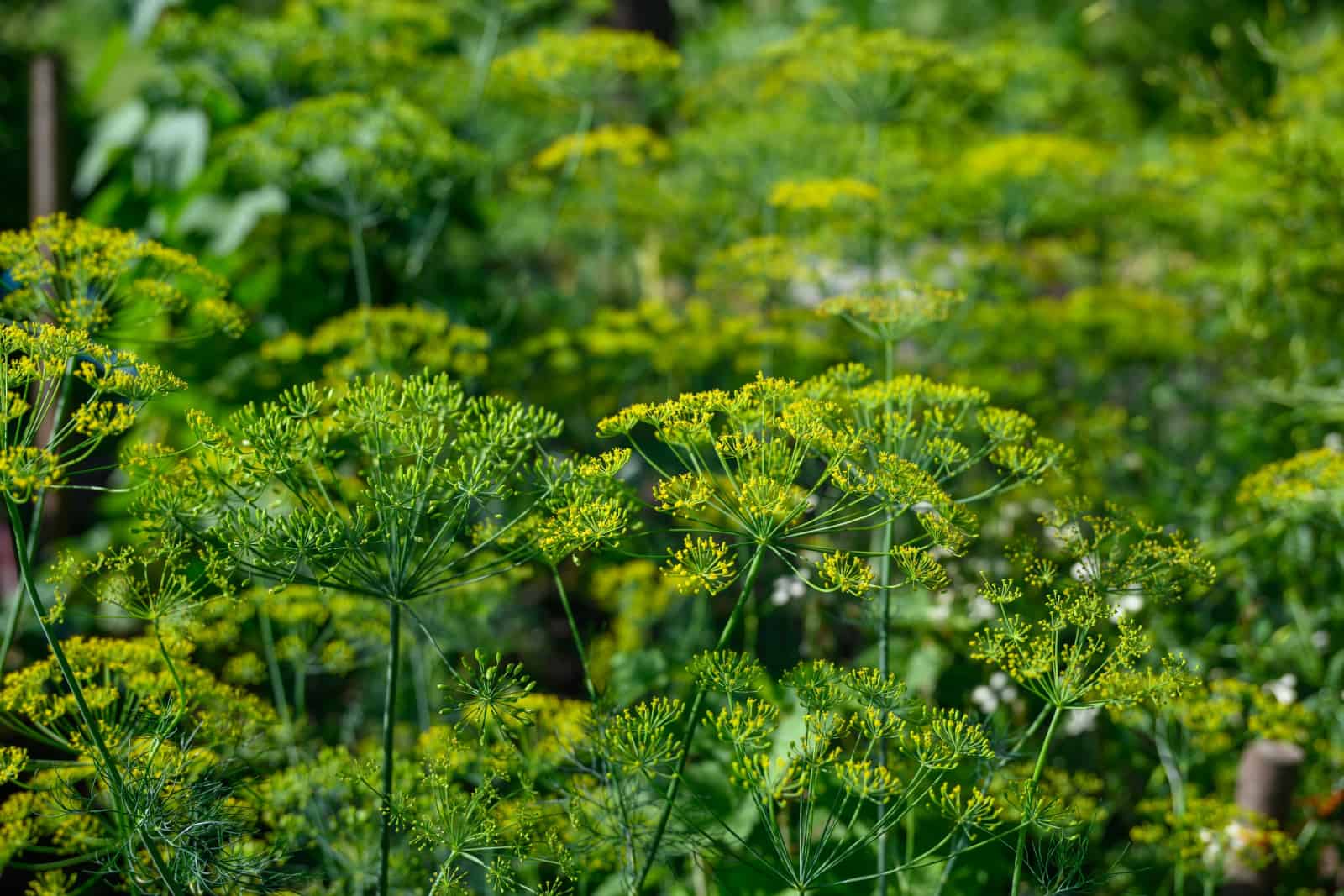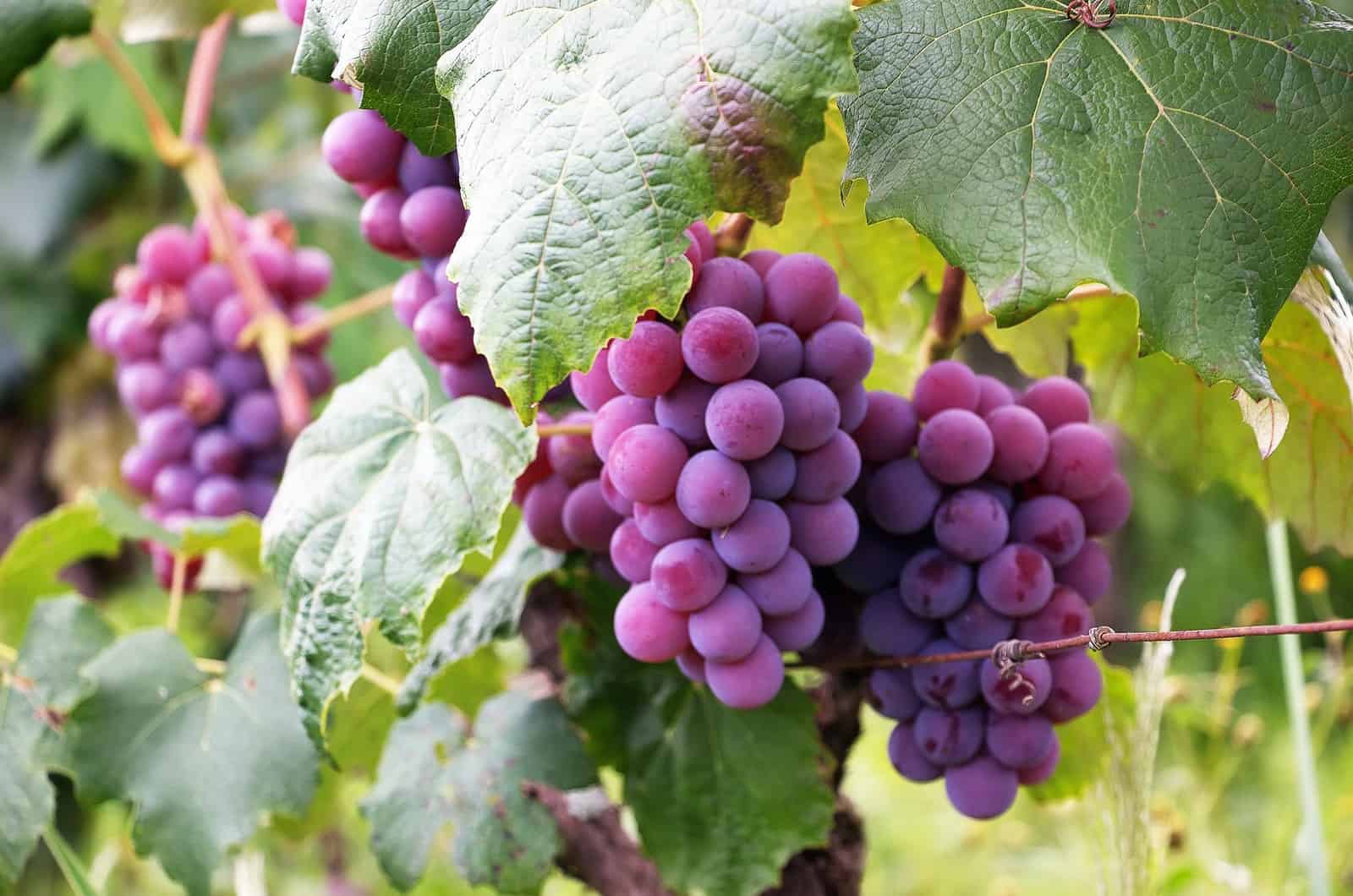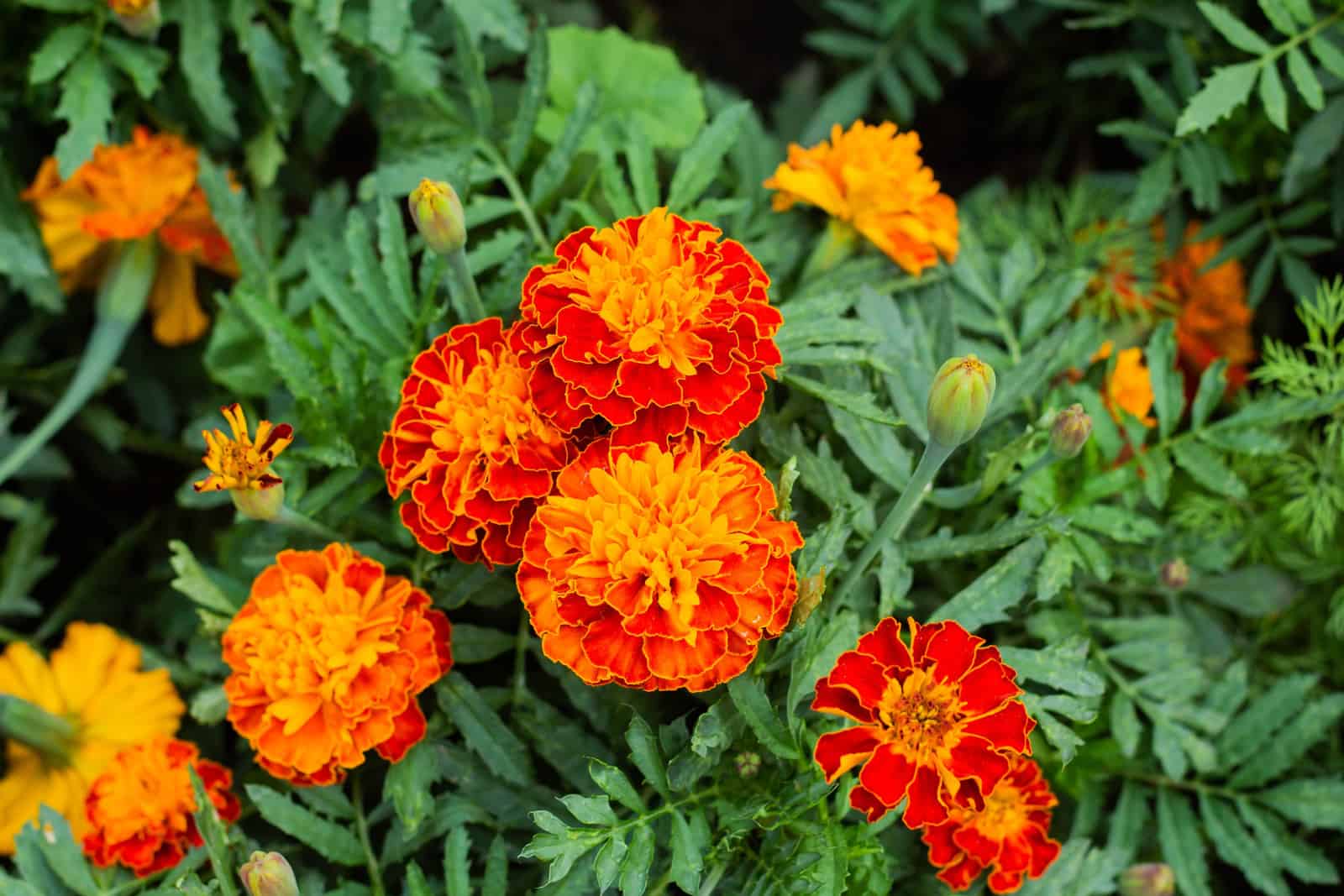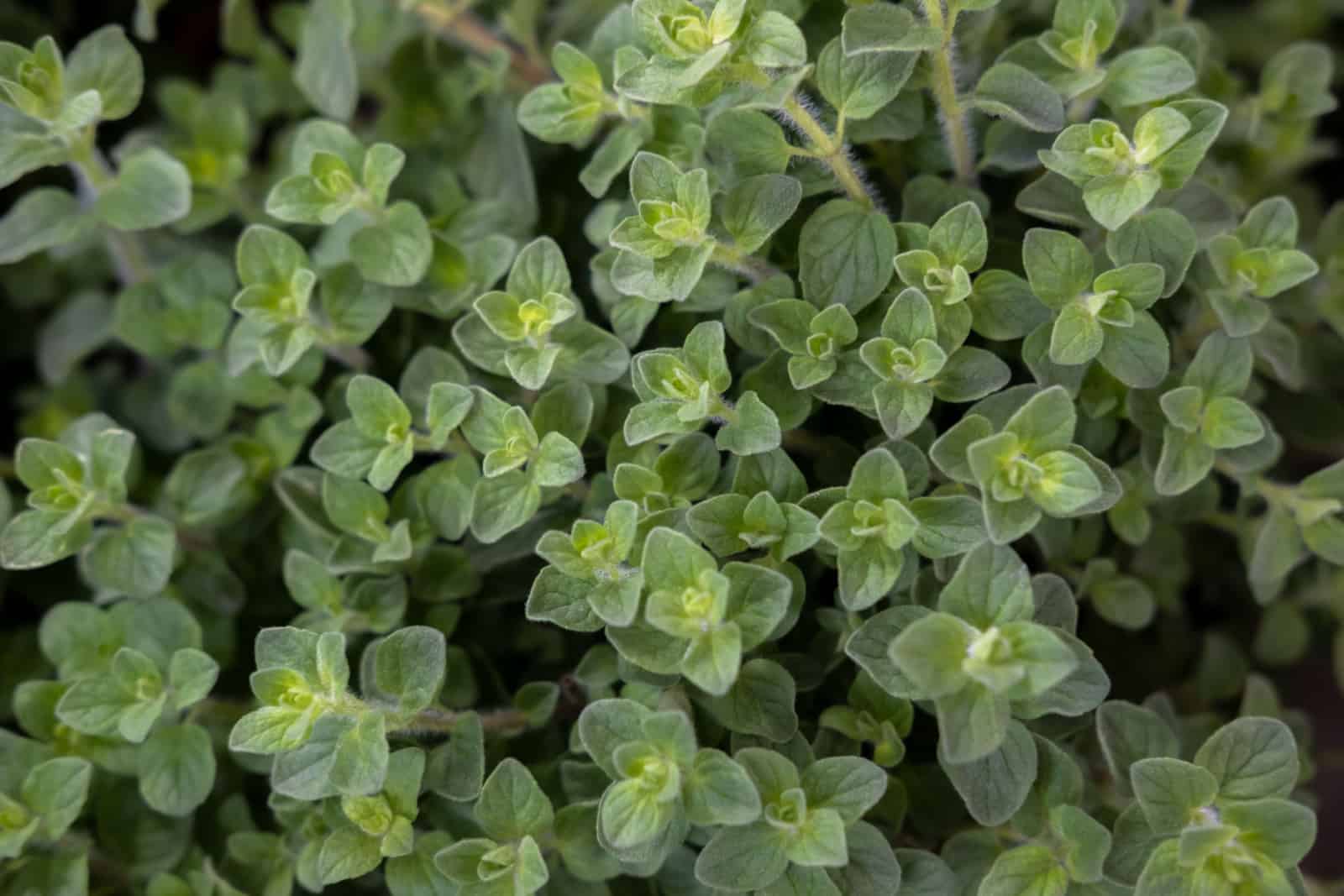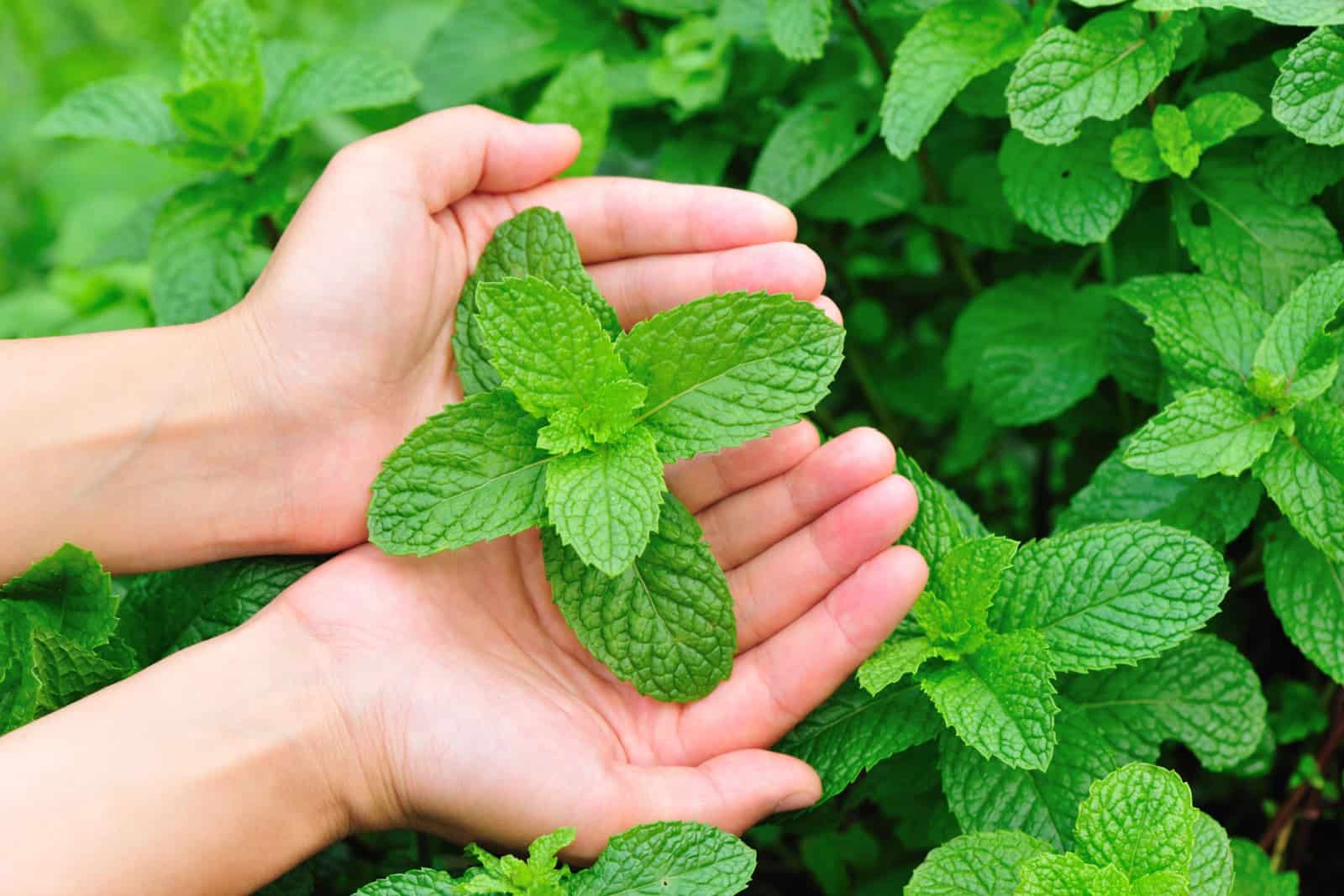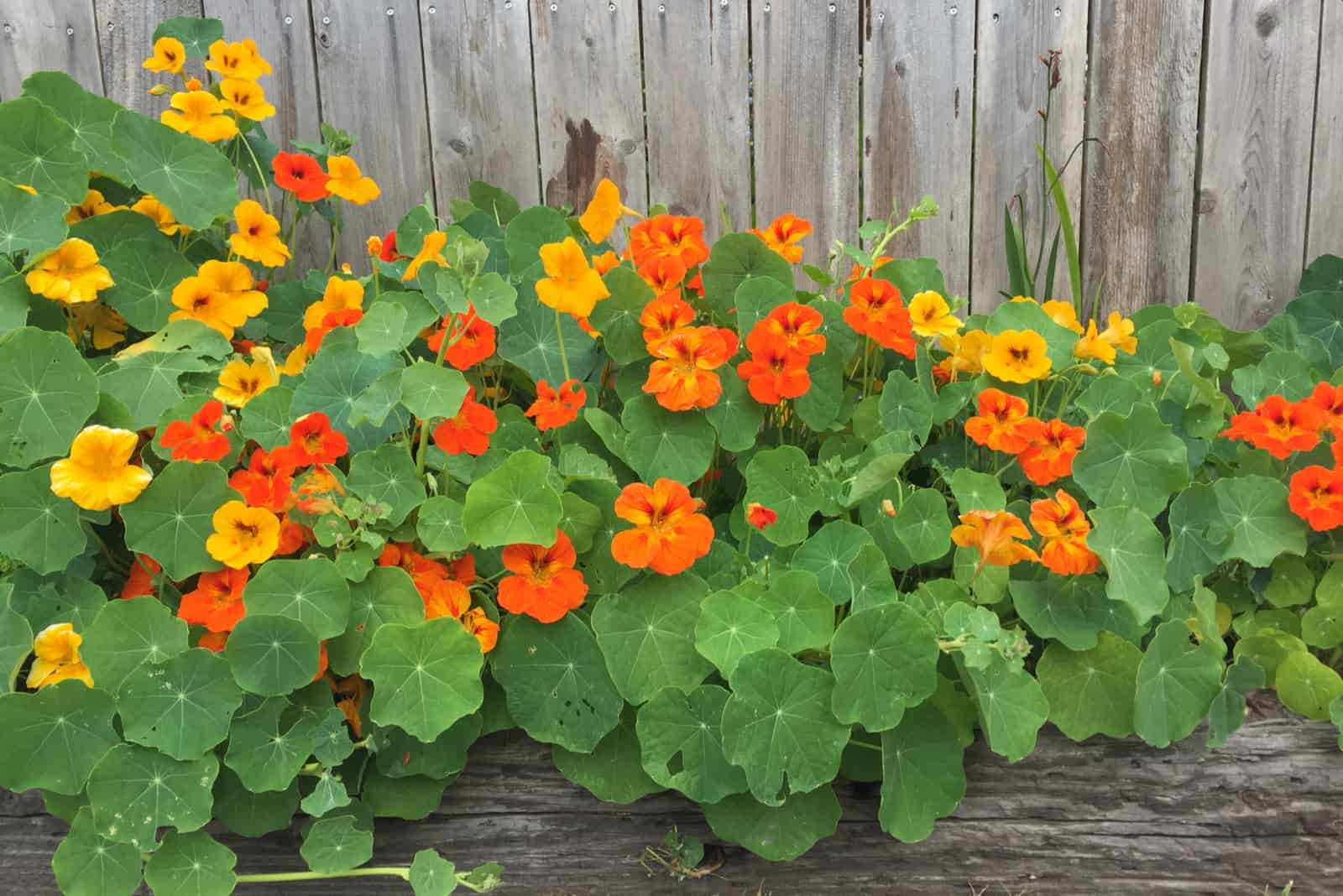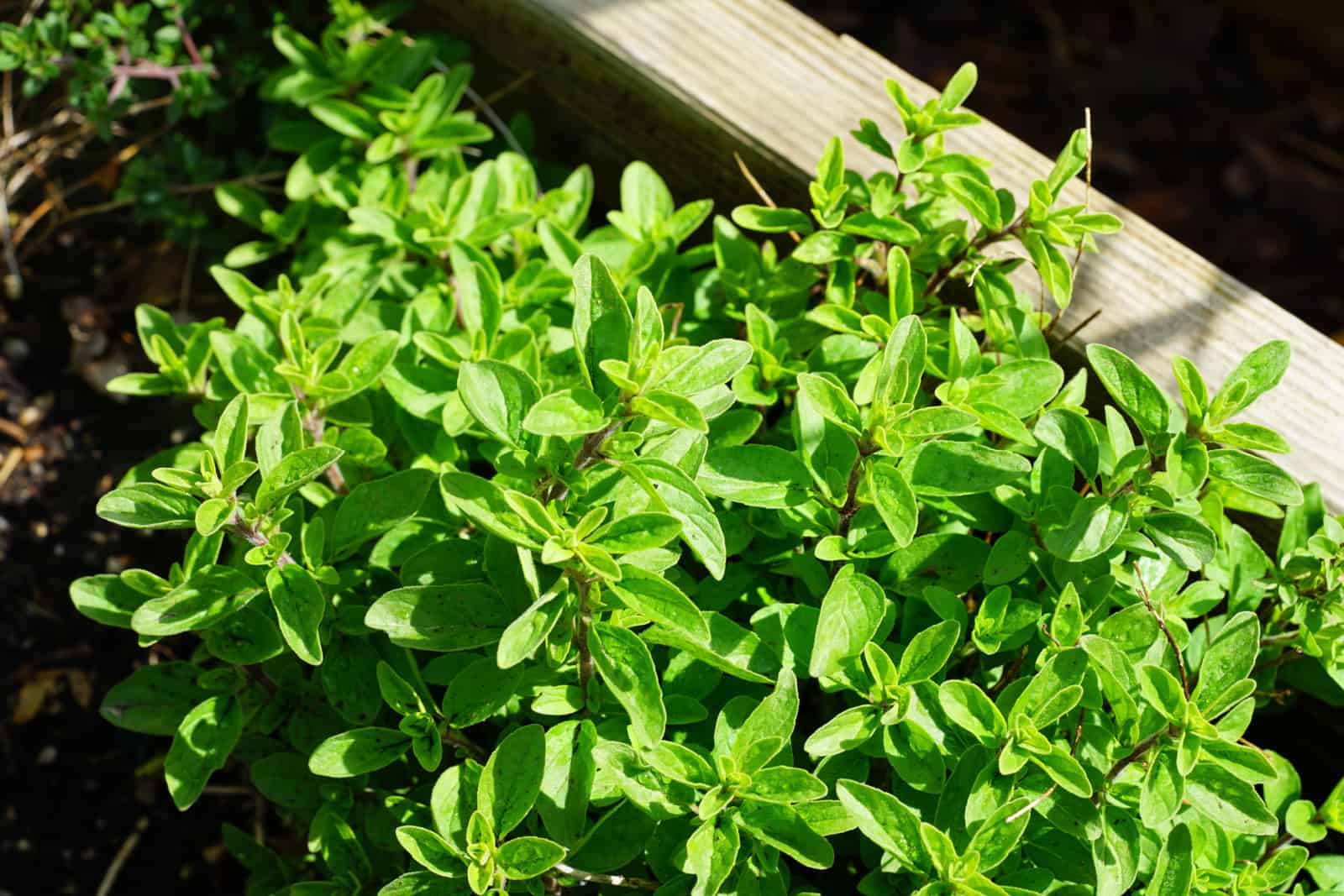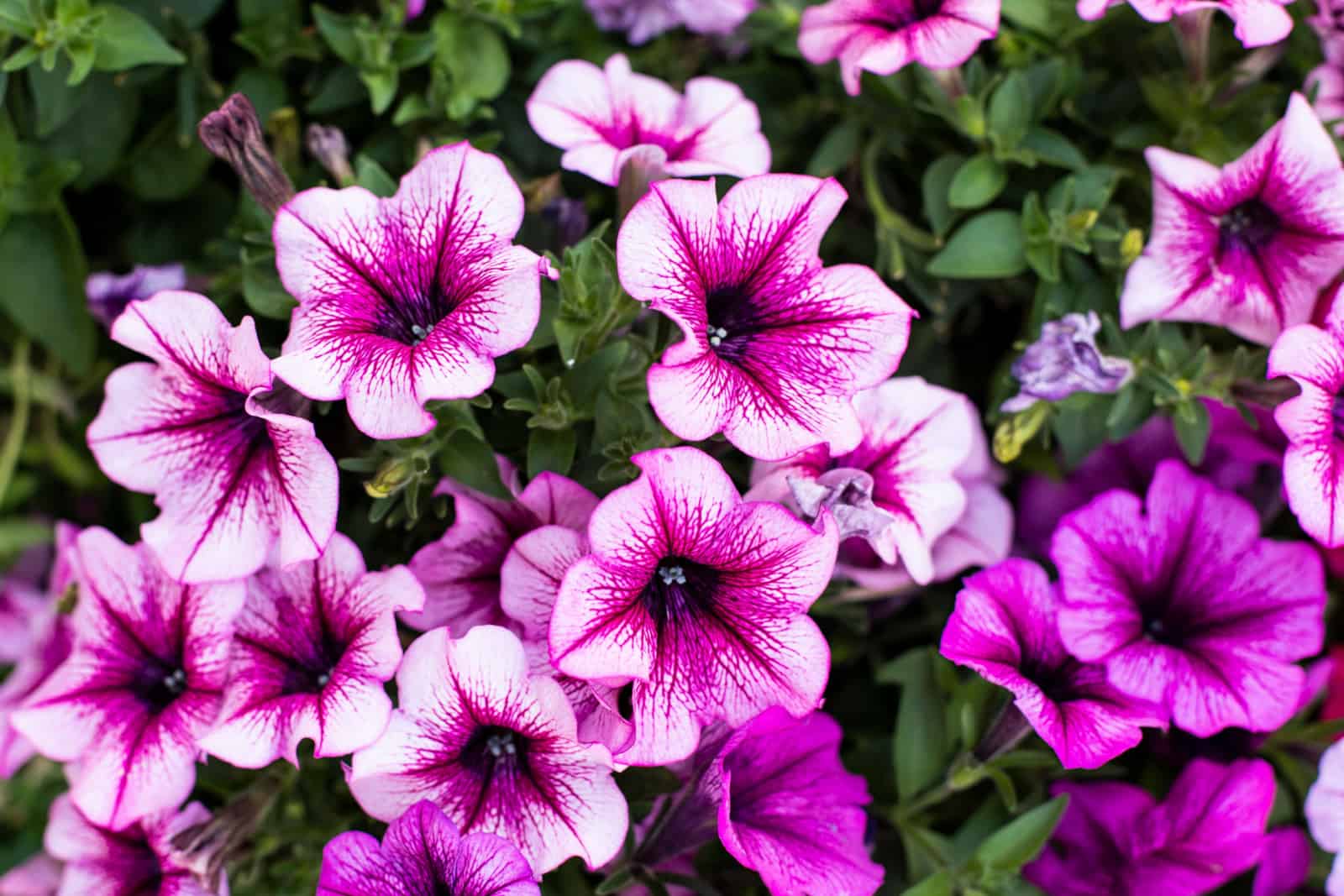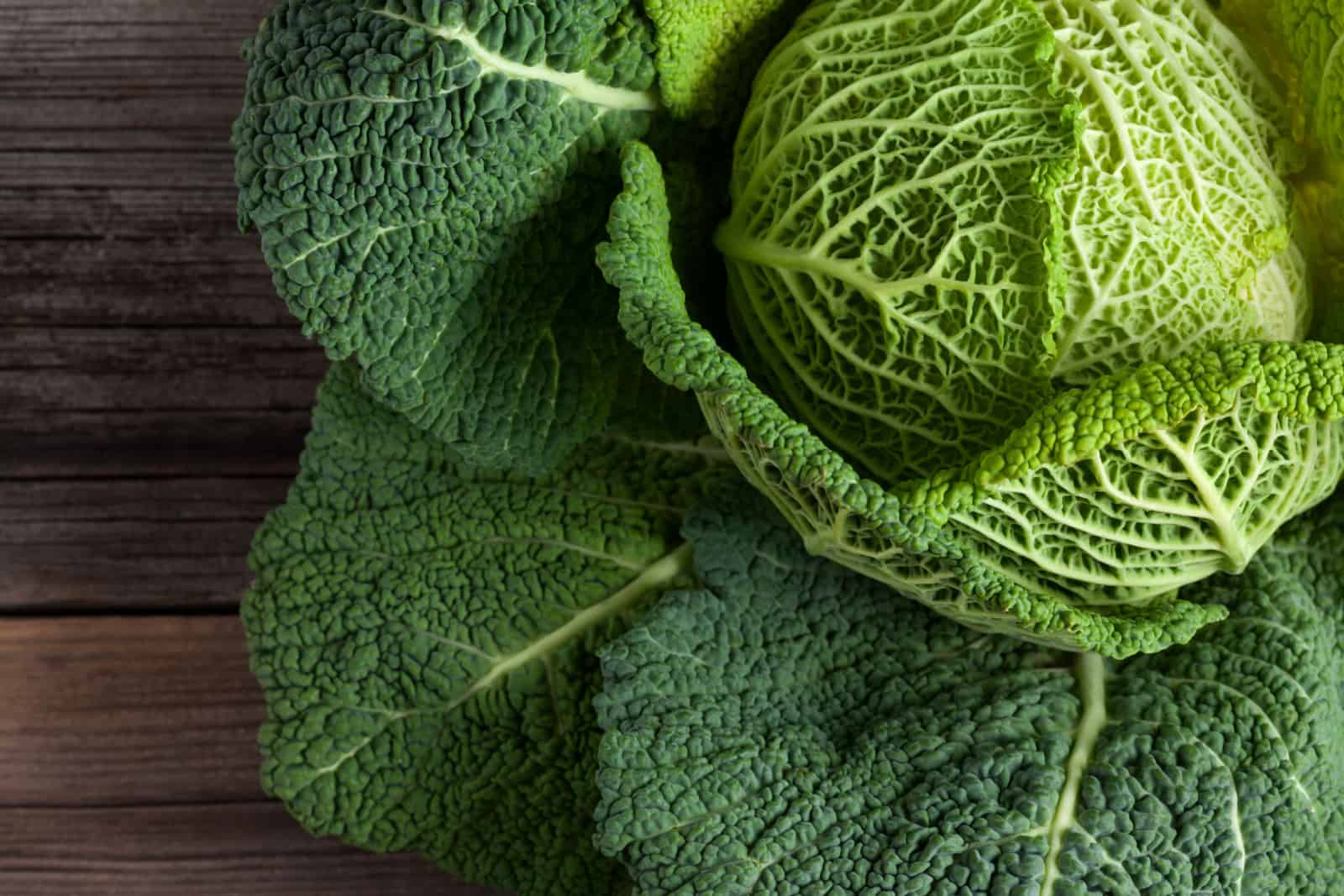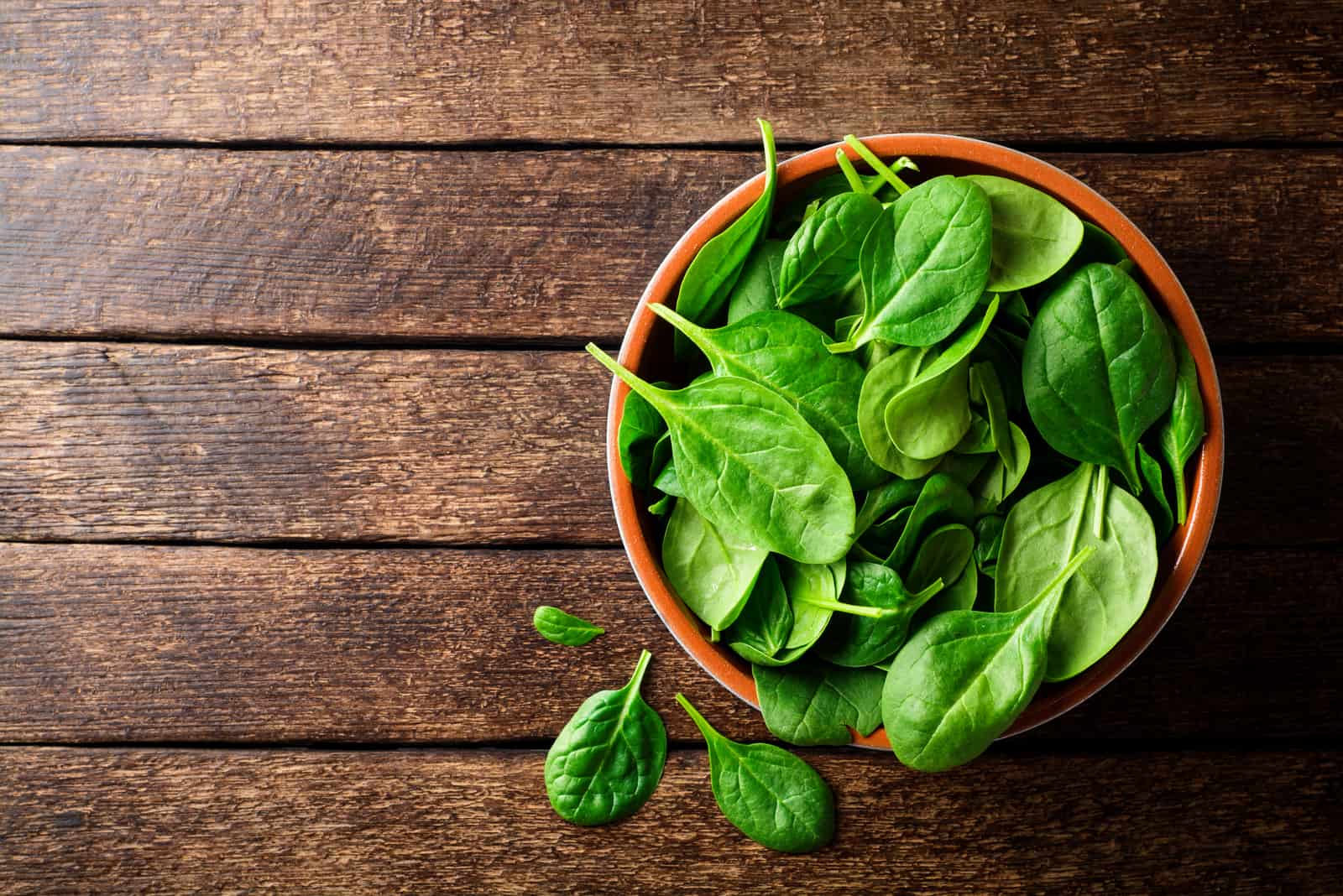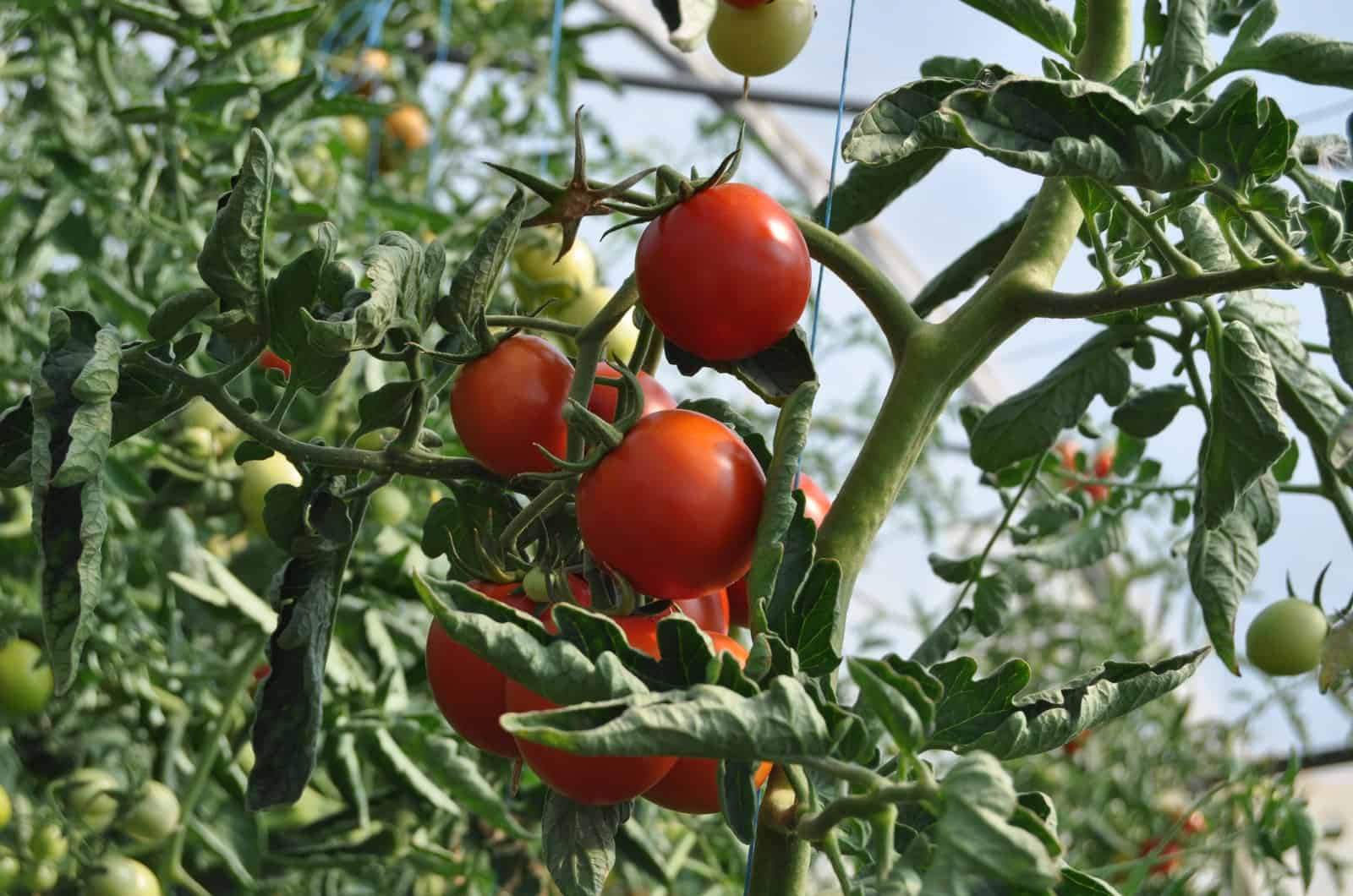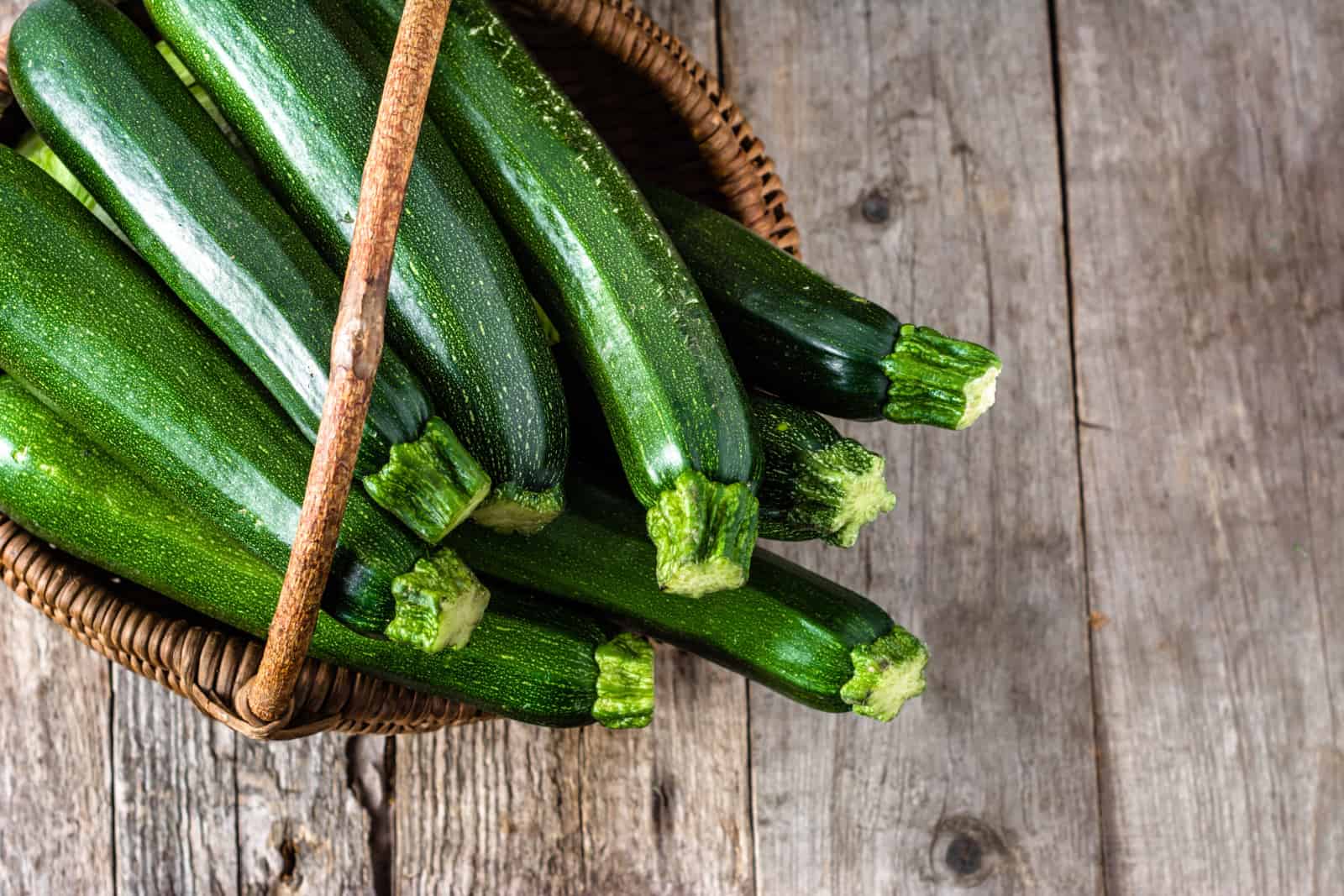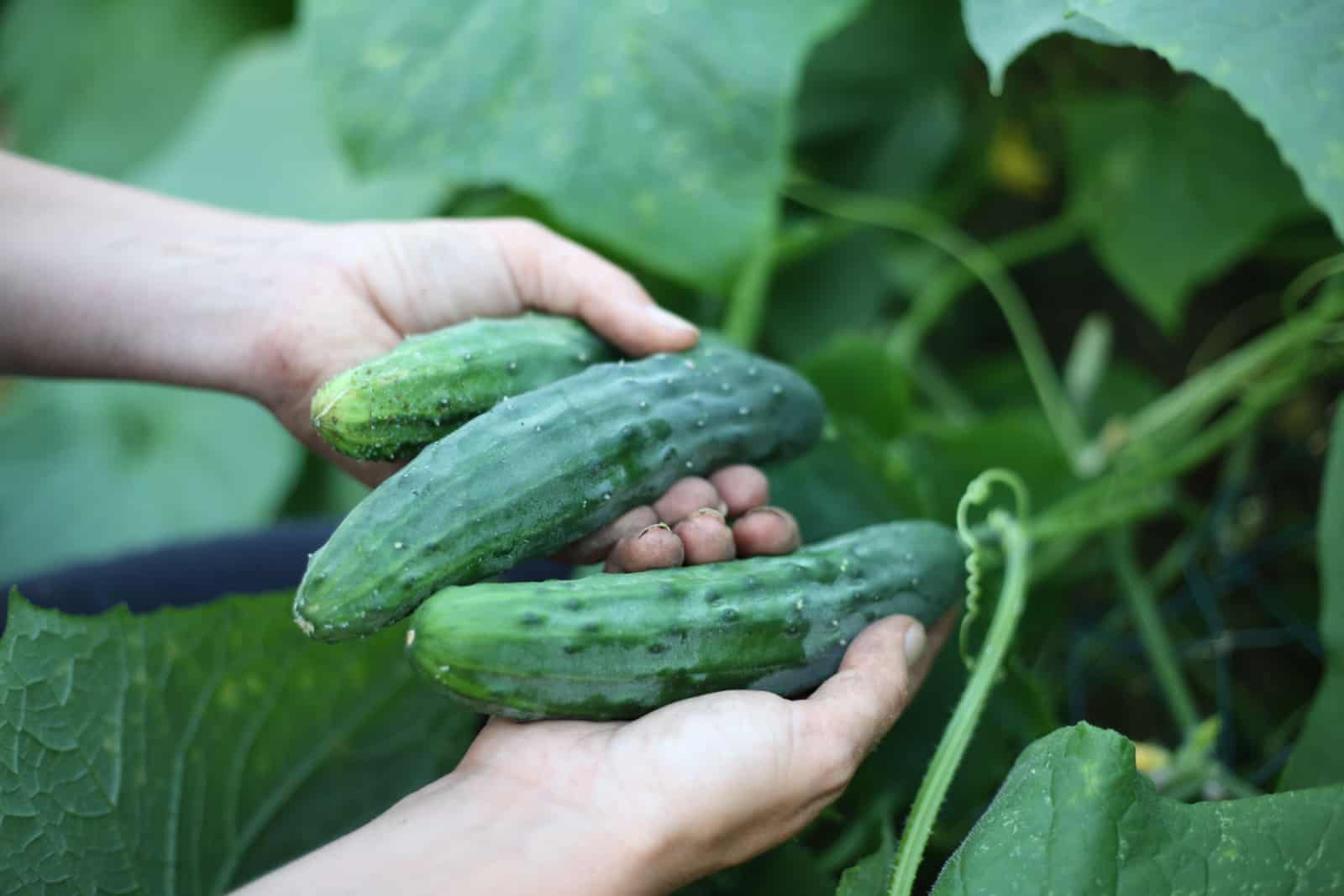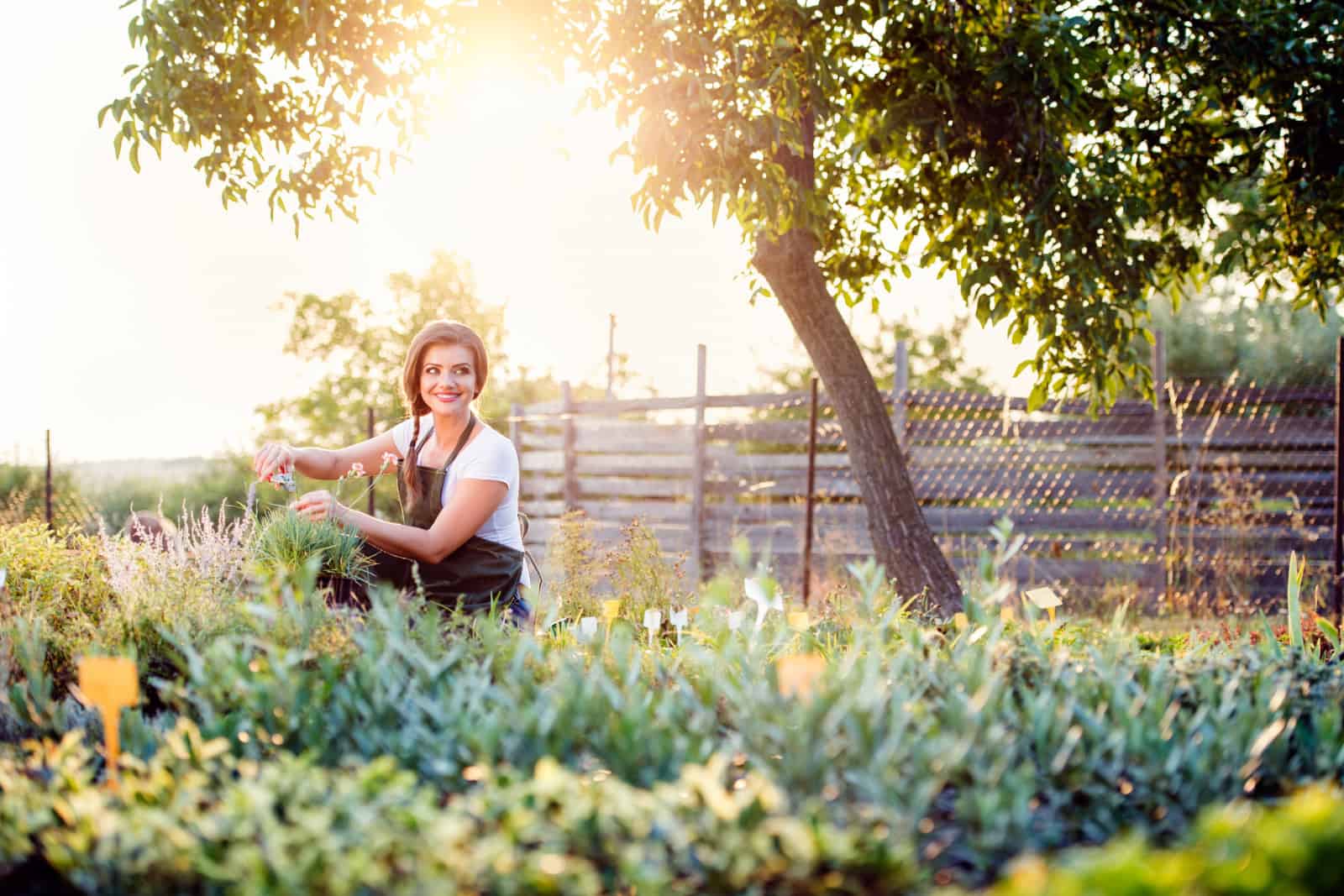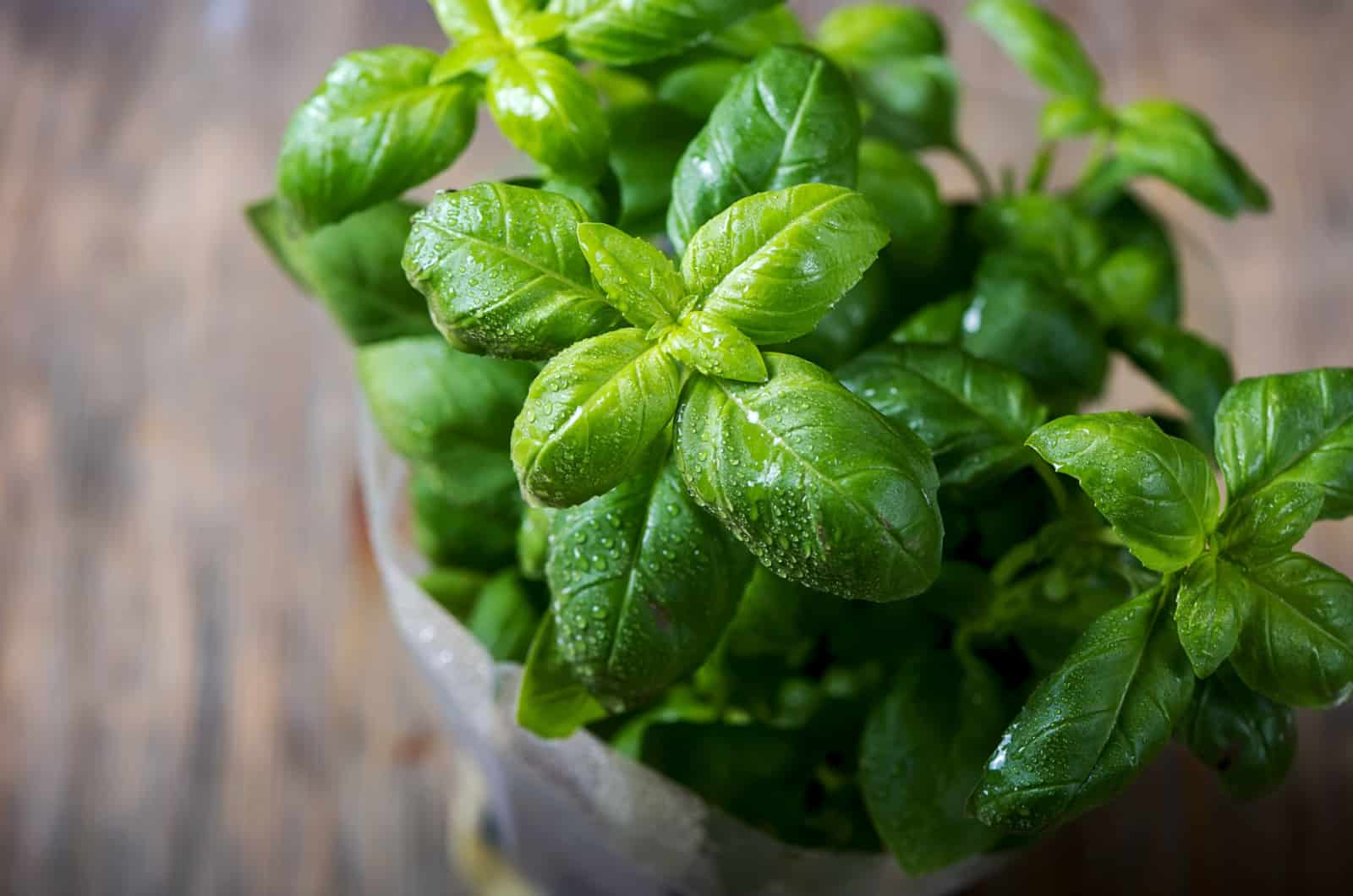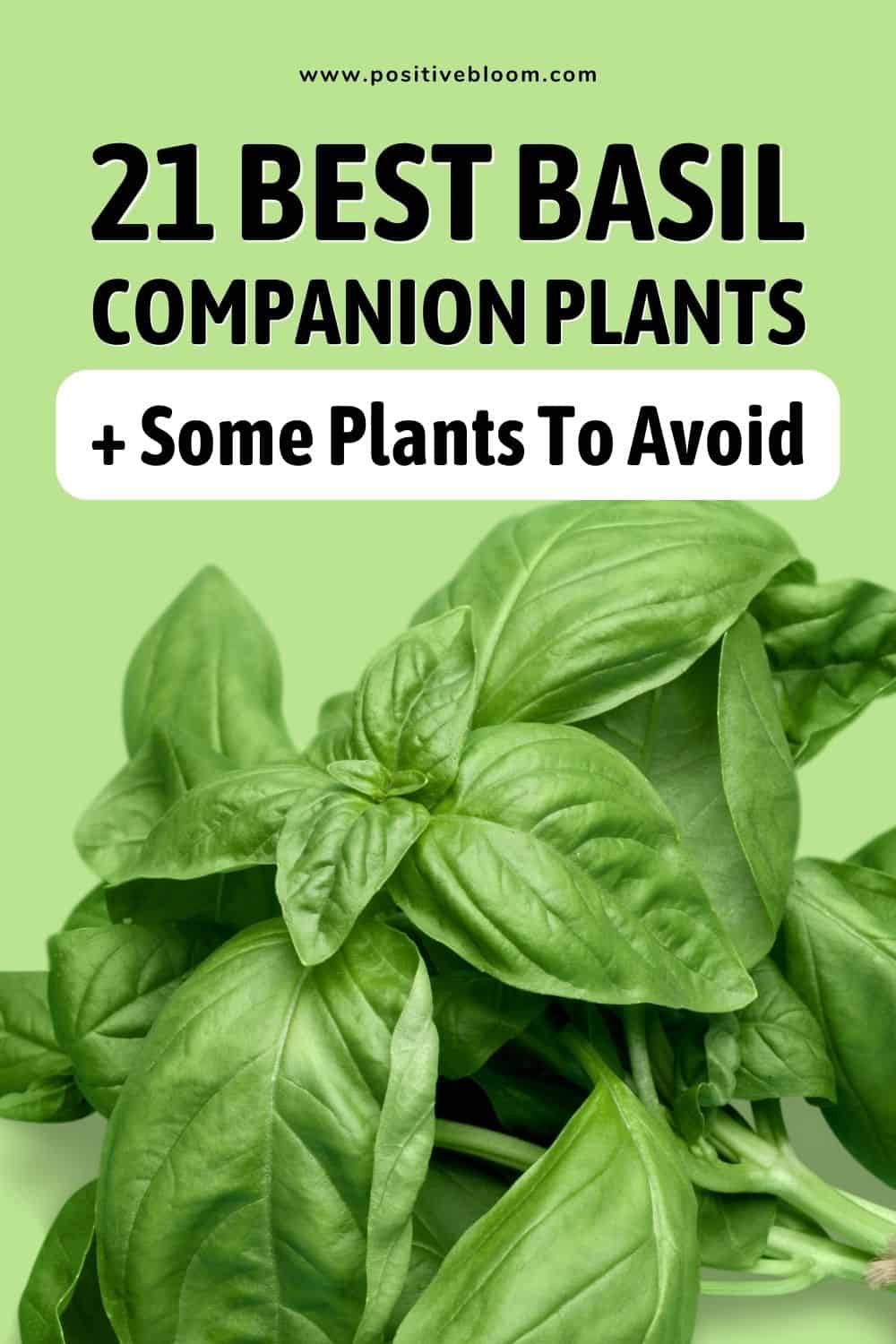The basil plant is one of those herbs that goes well with almost any dish; pizza, pasta, seafood, veggies, chicken… you name it!
In addition to pairing it with food, you can also grow it with veggies and fruits. Basil companion plants benefit from its strong fragrance, which deters garden pests and invites pollinators.
This plant can also improve the taste of its neighboring veggies (and some herbs enhance the flavor of basil as well), so it’s an excellent companion.
Of course, there are some bad companion plants for basil, mainly because they have different growing requirements, but we’ll talk about all that in the sections below.
We’ll also mention the most common benefits of companion planting, which should help persuade you to try this technique of planting and growing vegetables.
Now, let’s get started!
21 Basil Companion Plants
Some of the most common basil companion plants are herbs with similar growing requirements, such as oregano, marjoram, etc., root vegetables, plants from the cabbage family, tomatoes, cucumbers, and more!
Basically, if a plant can tolerate moist soils, they’re a good companion plant for basil.
1. Anise
Anise is an annual herb that belongs to the parsley family and is an excellent choice for a basil companion. It entices basil plants to produce more essential oils, which encourages growth.
And even though anise doesn’t have a strong scent that can deter aphids, it attracts parasitic wasps, which are natural enemies of these insects.
Furthermore, basil also attracts beneficial insects such as ladybugs, and they also feed on aphids and other pests.
2. Asparagus Plants
Both basil and asparagus have similar light requirements, so growing them close to each other in your garden bed can reduce your chores.
Also, this aromatic herb can repel the asparagus beetle, one of the most common pests that attack this veggie.
Basil also attracts ladybugs, which feed on aphids, spider mites, mealybugs, and whiteflies, and can naturally reduce the infestation.
Finally, understanding the asparagus growth stages should help you decide when to plant basil near this veggie due to its slow growth rate.
3. Bell Peppers
Basil is a great companion to all pepper plants, not just bell peppers. It attracts beneficial insects that feed on garden pests and invites pollinators to ensure an abundant yield.
This aromatic herb also provides an excellent ground cover for your bell peppers and maintains the high moisture levels that these veggies love.
4. Borage
If you want to decorate your kitchen window with herbs, then growing borage alongside basil is the way to go.
They have similar requirements and will get along nicely. However, both herbs are excellent at deterring pests, so growing them together in your vegetable garden can repel tomato hornworms and cabbage worms.
Borage also enhances the flavor of basil leaves and speeds up the development of this plant, so don’t miss out on these tasty herbs.
5. Chamomile
Chamomile and basil plants have similar requirements, so growing them together on your kitchen window can look attractive, smell wonderful, and keep your plants safe from pests.
These aromatic herbs deter pests with ease, and chamomile increases the production of essential oils in basil. Therefore, your leafy herb will be tastier and repel pests more effectively.
6. Chives
Chives are another variety you can plant in your herb garden to increase the production of essential oils and enhance the benefits of basil, such as attracting beneficial insects and repelling pests.
They also have similar needs, and chives can improve the flavor of basil, so why not grow them together?
7. Cilantro (Coriander)
Many growers plant cilantro with basil because of their similar sunlight, soil, and watering requirements. (You can even grow them in the same container!)
Both herbs are excellent at deterring pests and will keep each other and other veggies safe.
8. Dill
Dill and basil are another herb pair perfect for each other. Their similar needs allow them to be grown in the same pot, while their pest-deterrent abilities make them safe from almost all predators.
You can pair them with cilantro to create pest control or grow them in your vegetable garden, where they can keep your other plants safe.
You can also find some other popular dill companion plants, such as plants from the cabbage family and asparagus if you want to provide them with these benefits.
Finally, dill can enhance the flavor of basil and vice versa, so don’t refrain from sowing the seeds in the same pot.
9. Grapes
Grapes and basil might not seem like a working couple, but they’re actually great companion plants. First of all, basil deters the pests that attack these fruit vines (e.g., whiteflies and aphids).
This herb can also disguise the scent of grapes and make it difficult for harmful insects to find them.
Basil is an excellent ground cover, so it can keep the grape vines safe from scorching sunlight and prevent excessive moisture evaporation.
10. Marigold
Marigolds and basil are an excellent pair because they look amazing, fight side by side, and manage to deter potato, flea, and Japanese beetles, squash bugs, aphids, etc.
Marigolds can also repel nematodes and keep the roots of nearby plants safe.
You can grow marigolds and basil on their own to keep both safe or pair them with other plants in your vegetable garden to double up on the defense.
11. Marjoram
Planting herbs with similar needs together is an excellent way to save some space and time.
Both aromatic herbs attract pollinators and repel pests such as whiteflies, spider mites, and aphids, so they can protect each other’s foliage and increase the yield due to the higher bee and bumblebee populations.
You can also plant them around your garden beds to spread their fragrance and keep your veggies safe.
12. Mint
Mint is another moisture-loving herb that can grow well with basil. They both repel beetles and aphids, meaning they can protect themselves and other veggies.
Their pleasant fragrance attracts beneficial insects which fight pests, so you won’t have to worry about pest infestations.
However, mint can get invasive and overtake your basil if you’re not careful, so bear that in mind when deciding whether to plant them together.
13. Nasturtium
Nasturtiums might not have pest-repellent abilities like basil, but they can still reduce the infestation in your garden. They act as a sacrificial crop and keep your basil safe from aphids.
Also, the nasturtium flowers that do survive will go quite nicely with basil in salads.
You can find more companion plants for nasturtium, such as plants from the cucumber and cabbage families, and plant them near this herb and basil.
14. Oregano
Oregano doesn’t love moisture as much as basil, so you shouldn’t grow them in the same container. However, they both repel pests and can protect each other from aphids, spider mites, and whiteflies.
Oregano also enhances the production of basil essential oils, which improves its flavor and growth rate.
15. Parsley
Parsley and basil have similar soil, light, and watering requirements, so they’re great companions. You should always keep their growing medium moist, and you’ll soon notice how parsley has improved the basil flavor.
Basil will keep parsley safe from aphids, spider mites, and whiteflies, while parsley can deter root-knot nematodes. You can grow both plants alongside each other to keep your crop safe from all these pests.
And once basil blossoms, it will attract pollinators that increase the yield of your crop.
16. Petunias
Petunias aren’t just pleasing to the eye; they have extraordinary pest-repellent abilities, just like basil.
Both plants are known to deter aphids, tomato hornworms, and asparagus beetles, so you can grow them near various veggies or on their own.
17. Plants From Cabbage Family
The cabbage family includes a number of delicious vegetables such as broccoli, cauliflower, cabbage, brussels sprouts, etc., and all of them love growing near basil.
This herb is famous for repelling cabbage worms and loopers, so planting it near plants from the cabbage family is an excellent way of implementing natural pest control.
18. Root Vegetables (Radishes, Turnips, Beets)
Root vegetables such as parsnips, radishes, turnips, beets, potatoes, carrots, etc., thrive when you grow basil near them.
It might not help their tubers grow faster, but it will keep their leaves safe from sap-sucking pests such as aphids, mealybugs, spider mites, whiteflies, etc., due to its incredible aroma.
19. Spinach
The main benefit of planting basil with spinach is that this herb repels many pests and helps keep the delicious leaves of this veggie intact. You can grow spinach indoors and get great results!
20. Tomato Plant
Basil is one of the best tomato companion plants because it can repel tomato hornworms and protect your harvest.
The herb can also increase tomato production because it attracts many pollinators, and there’s also been some talk about how it can even improve the flavor of tomatoes.
21. Zucchini
Planting basil near your zucchini and squash invites pollinators that feed on their nectar, spread their pollen, and ensure a large yield.
Basil’s fragrance also keeps pests such as squash bugs at bay, and it attracts other insects like ladybugs, which feed on tiny pests, and parasitic wasps, which lay their eggs in aphids to kill them.
Pay attention if you grow zucchini vertically, as they could prevent sunlight from reaching basil.
Worst Plants To Grow Near Basil
Even though basil is almost perfect when it comes to companion planting, there are certain things you should avoid planting near it, such as cucumbers, fennel, and some herbs.
Why? Find out below!
Cucumbers
Growers don’t advise planting cucumbers and basil together because they’ll compete for soil moisture.
Also, cucumbers consist of 96% of water and tend to take on the flavor of nearby plants. Therefore, growing it with a herb such as basil (or holy basil, which is even more aromatic) will negatively affect the taste of this vegetable.
Finally, some gardeners have noticed a reduced cucumber harvest if grown near basil, so you should plant them apart from each other.
Fennel
Fennel is a herb that can repel many pests, but it also exudes a compound that inhibits the growth of its companions.
Therefore, if you want healthy, vigorous basil, plant it as far away from fennel as possible.
Drought-Tolerant Herbs
Basil is a perfect growing buddy to some herbs, while others hate its presence. For instance, you shouldn’t plant basil with sage, thyme, lavender, and other drought-tolerant herbs because they have different growing requirements.
Of course, you can grow them in separate containers if it’s only their watering needs that differ.
Thankfully, you don’t have to learn this by heart because there is a herb companion planting chart you can always refer to when in need.
6 Benefits Of Companion Planting
Attracting beneficial insects – There are many benefits of companion planting, but the main one is attracting beneficial insects, such as pollinators or ladybugs and parasitic wasps, which deal with pests in your garden.
Pest control – Speaking of pests, many fragrant herbs and plants, including basil, marjoram, marigold, thyme, sage, lavender, etc., can deter insects simply with their fragrance.
Improving flavor and growth rate – One of the things that most gardeners love about companion planting is that there are also plants that enhance the taste and growth rate of the nearby herbs and veggies (chamomile, chervil, basil, etc.).
Supplementing the soil with minerals – If you want to enrich the soil with minerals like nitrogen, you can always plant some legumes, pole beans, and bush beans in your vegetable garden since they take part in nitrogen fixation.
Providing ground cover – Some plants, such as basil and cover crops, can provide ground cover for other plants and prevent wilting. They keep the base of the plant cool and protect their roots by reducing the evaporation rate of the soil moisture.
Providing shade – Finally, tall plants may keep the short ones from burning out in the sun, especially if the former ones prefer some shade during the hot afternoons.
Final Thoughts
Basil companion plants include tomatoes, asparagus, various moisture-loving herbs (marjoram, mint, oregano, dill, cilantro, parsley, etc.), flowering plants such as marigold, nasturtium, petunias, root vegetables, plants from the cabbage family, and so on.
All these plants benefit from basil’s ability to deter pests and attract beneficial insects, such as pollinators and natural enemies of certain harmful insects.
Some also share these properties, so you can plant them together to double the efficiency.
On the other hand, there are also plants that you shouldn’t plant near basil, such as cucumbers, fennel, and drought-tolerant herbs.
P.S. We also included some benefits of companion planting so that you can discover how you can help your vegetables and reduce your chores.
Good luck, and until next time!
Like this post? Share or pin it for later!


